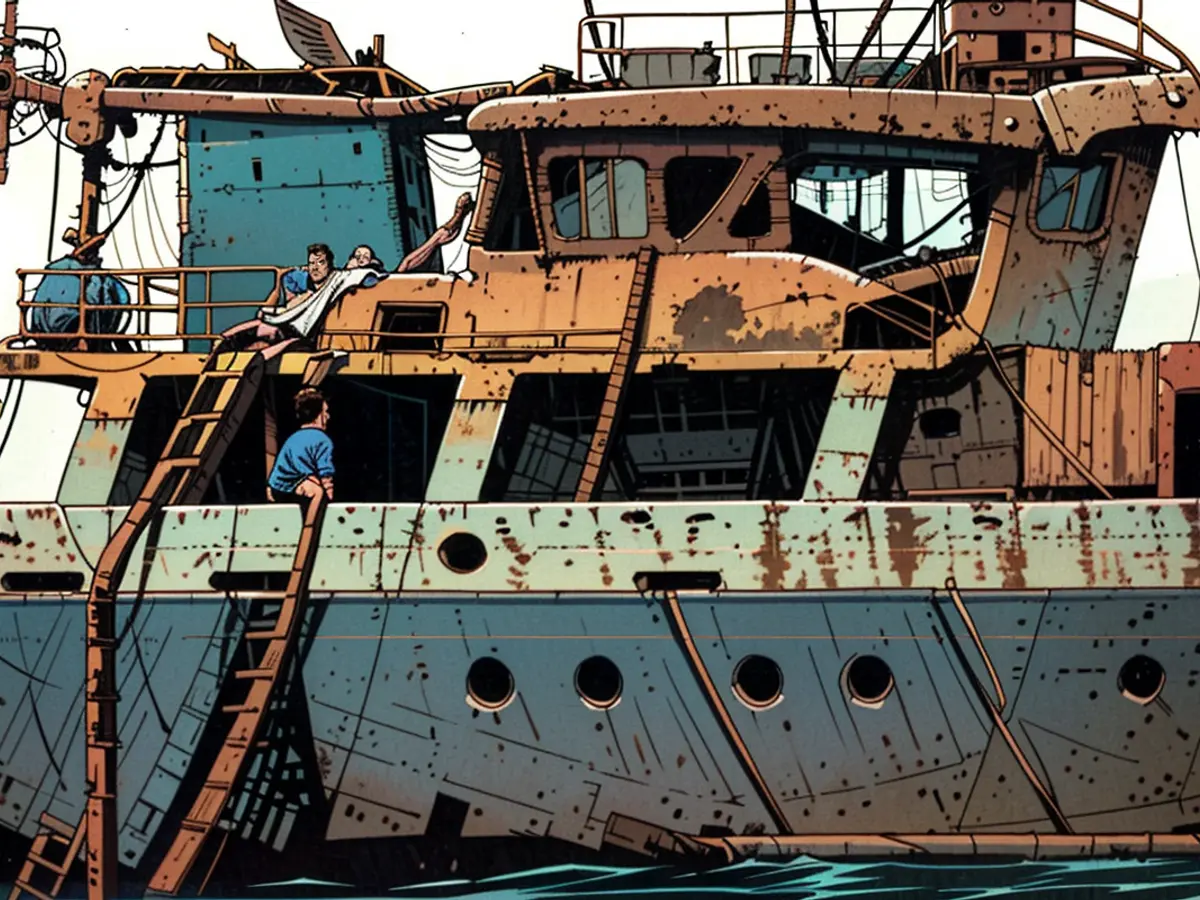- Successful restoration of Verity from the North Sea's depths achieved
After a maritime mishap roughly eleven months prior, in the German Bight, the freighter "Keenness" had been submerged. Recently, it was recovered. One of Europe's sturdiest floating hoists raised the final significant debris with heavy-duty chains from the water, placing the bow segment, the ship's front end, onto a platform as announced by a spokesperson from the General Directorate of Waterways and Shipping. Inside, the quest for the lost sailors continues - three crew members of the "Keenness" remain unaccounted for.
Authorities presume that these men perished in the incident, much like the two sailors whose bodies have already been discovered. In tribute to the deceased and the missing, Pastor Martin Struwe from the Seafarers' Mission led a commemoration service aboard a vessel close to the incident site. Attendees aboard the ship observed a moment of silence. The pastor also spoke about the perils faced by sailors: rough weather, mishaps, piracy, crises, and conflicts.
Upon salvaging operations, the aft segment of the ship, which had split underwater, was extracted first from the seabed. The collision site is evident. It's round, approximately 4 meters in radius, and illustrates where the coastal motor vessel "Keenness" was rammed. The breach in the hull is visible. "It was apparent that one could look out from within again," stated Lea Beyling, an investigator from the Federal Maritime Casualty Investigation Bureau, who examined the site from another vessel. According to her, the rapid ingress of water into the cargo hold prompted the ship to sink.
Approximately 70 personnel, including divers, worked around the clock for the salvage operation. Due to the brief windows for subaquatic work during the shifting between high and low tides, the operation faced challenges. "The most prominent challenge is the weather on the North Sea, as it's unpredictable," said Marc Antony Rooijakkers, a salvage leader, situated near the incident site.
Operations to extract the front part of the ship commenced late on Tuesday evening. Ultimately, the crane, as claimed by the General Directorate of Waterways and Shipping, capable of lifting up to 2,200 tons, maneuvered the wreckage from the water's depth. The entire wreck would now be transported to the Netherlands for appropriate disposal.
Investigations regarding the accident's cause are ongoing.
The reasons behind the dreadful collision of the two freighters remain undetermined. In conjunction with a U.K. authority and an authority in the Bahamas, the Federal Maritime Casualty Investigation Bureau is investigating the incident, as reported by investigator Beyling. However, the publication date of the report remains uncertain.
However, it is established that the coastal motor vessel "Keenness" and the freighter "Polesie" collided early on October 24, 2023, in the German Bight. The "Keenness," with seven crew members and a cargo of 187 steel coil rolls, sank. Promptly, ships and a German Navy helicopter deployed to search for the vessel. Adverse weather conditions complicated the mission. Two individuals were rescued from the water, and five crew members were stated to have perished by the authorities. Three of these individuals are still missing, with their bodies yet to be found.
"Polesie," with 22 individuals aboard, managed to stay afloat after the incident. With a length of 190 meters, it is significantly larger than the "Keenness." Initially registered in Hamburg, it was sailing to La Coruña, Spain, under the Bahaman flag. The coastal motor vessel "Keenness," meanwhile, was operated by the British-Dutch shipping firm Faversham Ships and was en route from Bremen to Immingham, a port on the English North Sea coast.
The location of the "Keenness" wreckage at approximately 40 meters below water was identified after the accident. This area, around 22 kilometers southwest of Helgoland High Seas Island and 31 kilometers northeast of the East Frisian Island of Langeoog, is one of the busiest maritime zones globally. Due to the potential hazard to navigation, the wreck required salvage. This operation, requiring specialized companies, spanned several months and involved extracting hazardous substances and recovering the freighter's cargo. Preparations then began for the wrecks' lift from the water.
Estimates put the overall salvage cost at around 12.5 million euros. The majority of this expense will be borne by the federal government, with insurance covering approximately 2.3 million euros.
The following shall be added to the salvage operation's expenses: the fees for the Special Interior Search Team hired to inspect the recovered bow segment in search of the missing crew members.
Upon completing the salvage operation, further investigations will involve examining the recovered segments of the "Keenness" to uncover more details about the collision, as per the agreement made with the joint investigation team.








